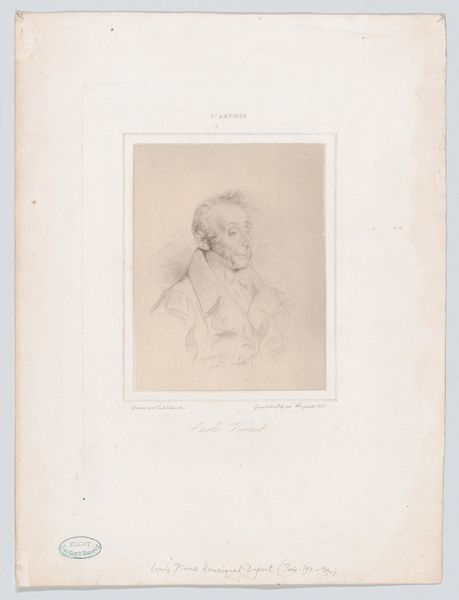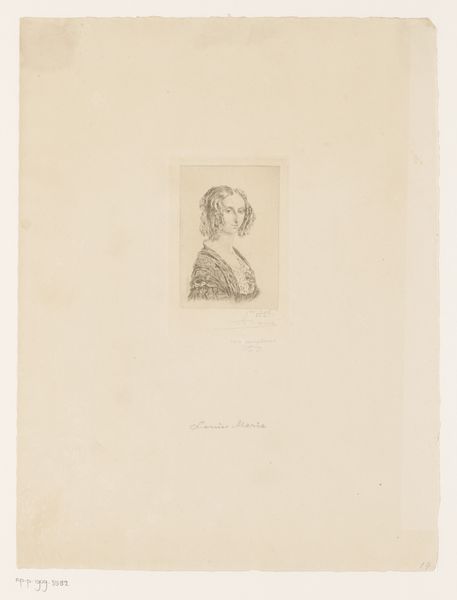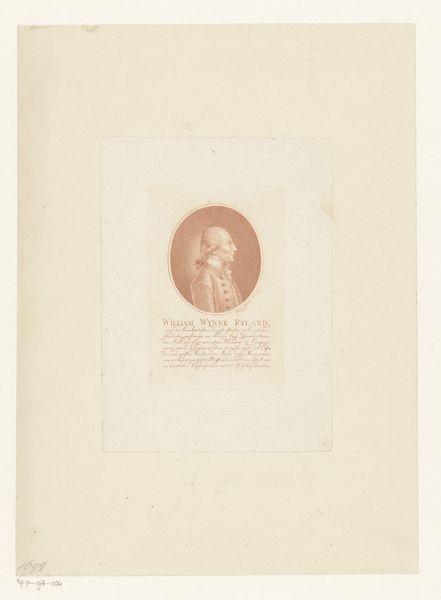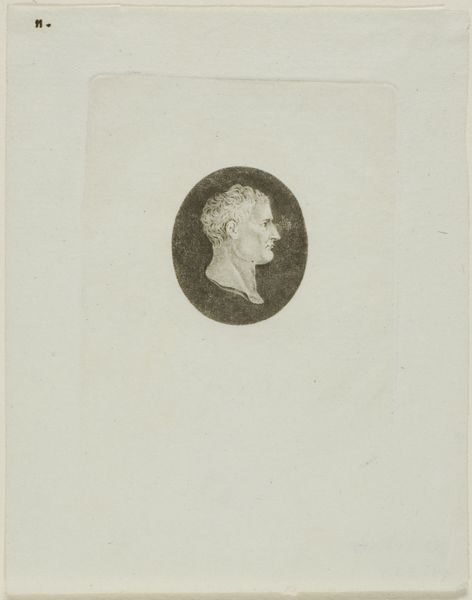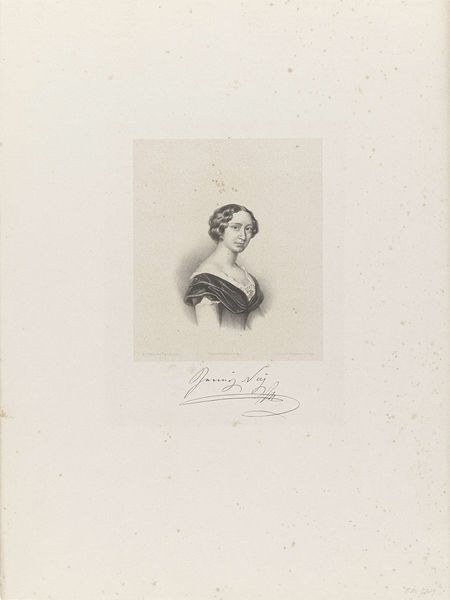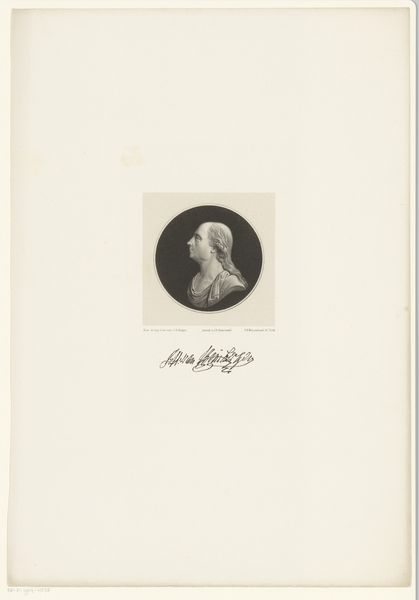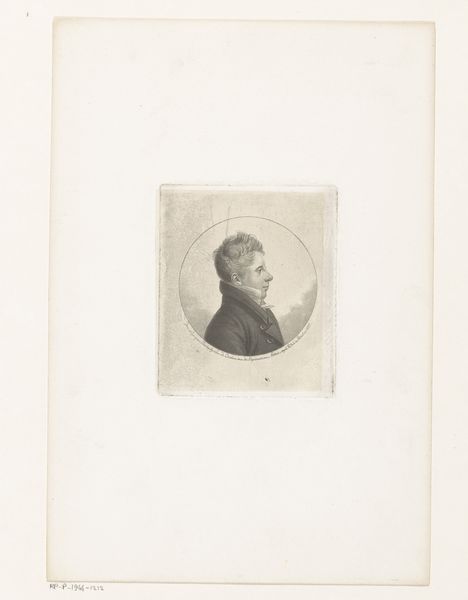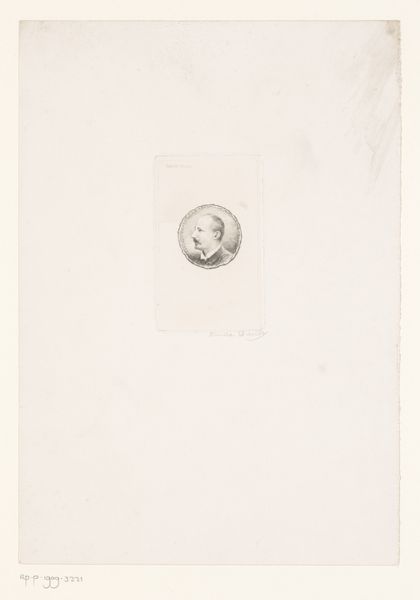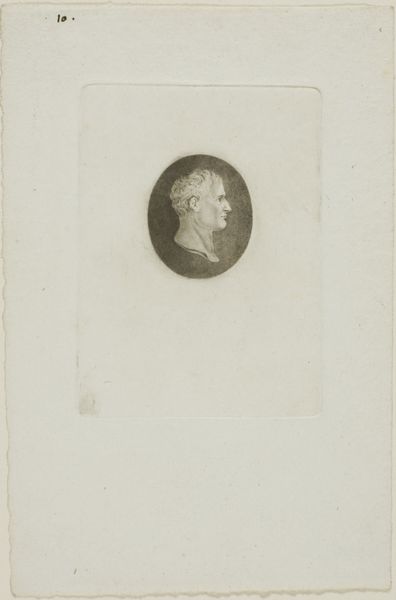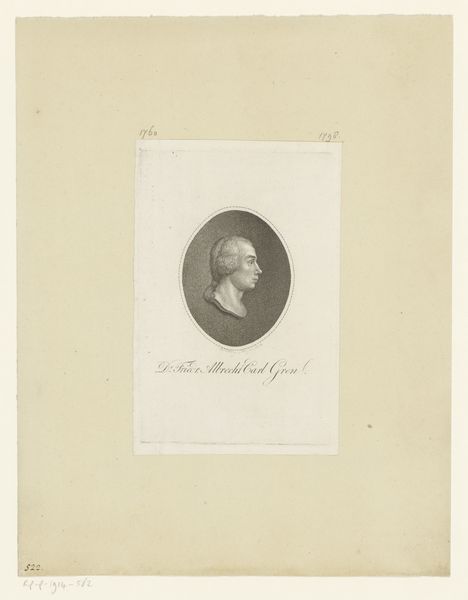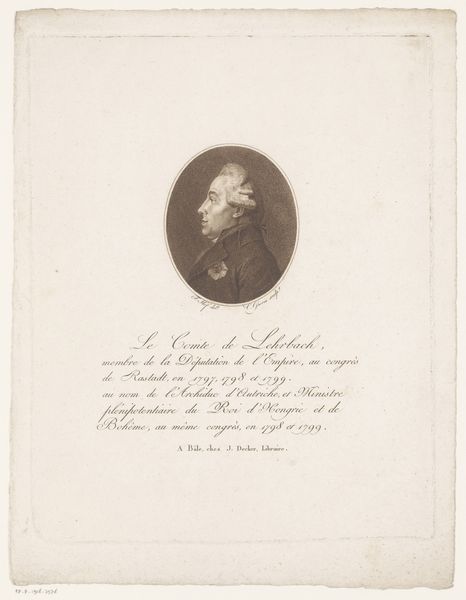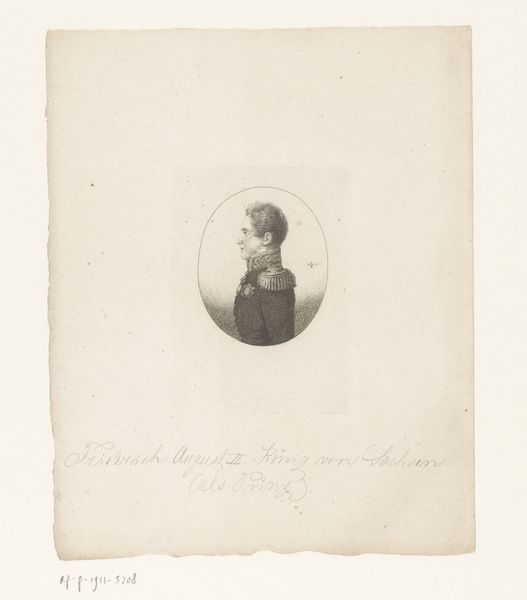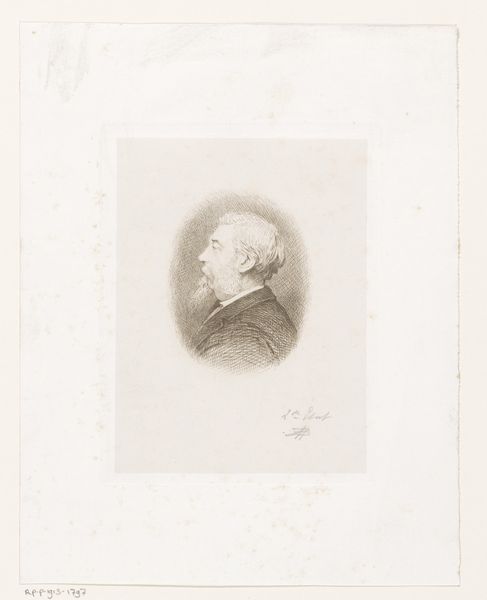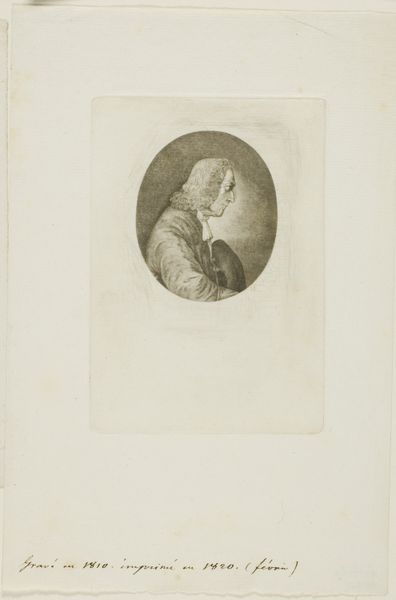
drawing, print, paper, pencil, graphite, engraving
#
portrait
#
pencil drawn
#
drawing
# print
#
pencil sketch
#
paper
#
pencil
#
graphite
#
engraving
Dimensions: 61 mm (None) (billedmaal), 95 mm (height) x 83 mm (width) (plademaal)
Curator: Allow me to introduce this intriguing print, "Cathrine Elisabeth Hald," dating roughly between 1767 and 1824, part of the collection at the SMK, Statens Museum for Kunst. It's attributed to Andreas Flint. Editor: My immediate sense is one of delicacy, almost fragility. It looks like pencil and graphite on paper. The pale gray shading behind the head gives it such depth. Is it an engraving, or perhaps even a lithograph? Curator: Actually, it’s believed to be a pencil drawing reproduced as an engraving. What strikes me is how this piece serves a public role—distributing an image, potentially cementing social status through representation. We can consider who commissioned this and why. Editor: The print process is key, and affects who could view it. An engraving meant that Hald's image could reach a far wider audience than an original drawing ever would, at a time when portraiture was about visibility and control of one's own likeness and social capital. Curator: Exactly. The style is classical portraiture, adhering to certain conventions to express the subject's place within society. Editor: Even the paper and the choice to engrave, those decisions speak to access and consumption. Was paper readily available in Denmark during this period? These materials often dictated what kind of art was even possible. Curator: Indeed. Thinking about this piece in terms of access to materials, combined with social pressures influencing modes of presentation gives a broader scope. The Hald family was, I believe, fairly well-established. This type of refined engraving certainly reflects that. Editor: It moves me to consider the actual process; the skill of the engraver transferring that delicate pencil work onto the plate. Curator: It provides an example of how art acts as both a record and a marker of cultural values in 18th and 19th century Denmark. Editor: Agreed. It helps me recognize all the skilled labor behind it. This image really speaks to how interconnected making and social positioning always are.
Comments
No comments
Be the first to comment and join the conversation on the ultimate creative platform.
